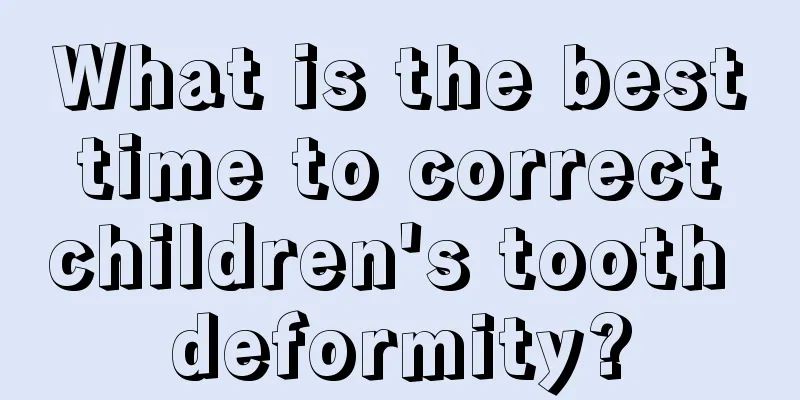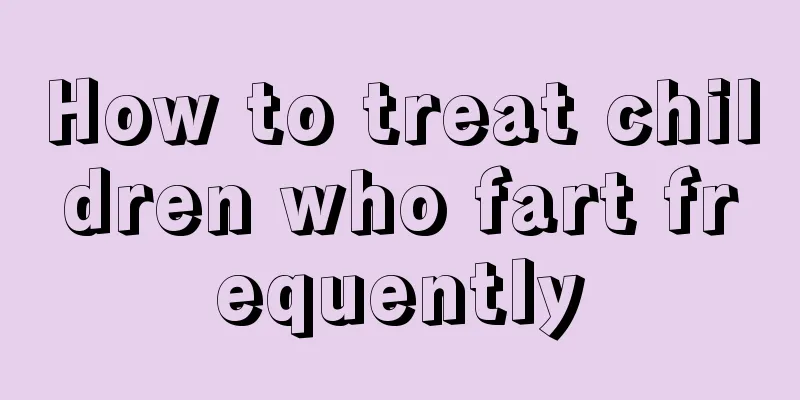What is the best time to correct children's tooth deformity?

|
If a child has tooth deformities, it is important to choose the best time for treatment. Because the child's body recovers faster, the effect of treatment is best. Once the best time is missed, it will cause certain problems for the child's tooth development and orthodontics. The best time for treatment will vary depending on the child's different tooth deformities. 1. Primary teeth stage (4-5 years old) This stage is mainly suitable for crossbite of deciduous teeth (underbite). Early correction is beneficial to the development of the maxillary bone and prevents crossbite of permanent teeth. If the child has bad habits (such as sticking out the tongue, biting the lips, etc.), they can also be corrected at this stage to prevent the occurrence of malocclusion. 2. Teething stage (girls: 8-10 years old, boys: 9-12 years old) It is suitable for patients with early-stage functional malocclusion and skeletal malocclusion caused by bad habits, tongue interference and other factors. If you find that your child has bad habits (such as biting lips, sticking out tongue, protruding lower jaw, etc.), abnormal facial shape and abnormal tooth arrangement during the tooth replacement stage, you should take your child to the hospital to see an orthodontic doctor for examination and consultation in time. Because this stage is the pre-adolescence and peak period of a child's growth and development, if your child has functional or skeletal malocclusion, treatment at this stage can make full use of the growth potential of the jaw and achieve the treatment goal by promoting or inhibiting the growth of the jaw, which is more beneficial to improving the child's facial shape and function. 3. Early stage of permanent teeth (girls: 11-14 years old, boys: 13-16 years old) Children at this age can see how their teeth are growing, and a common symptom of bad teeth is malocclusion. The best time for treatment is after the age of 11. During this period, many permanent teeth in the mouth have begun to sprout and the development of the dental arch has been basically completed. The uneven teeth have basically been fixed. Moreover, the maxillofacial development of children at this age is still in a rapid growth and development period. Orthodontic correction requires to utilize the growth and development potential of the maxillofacial region to a large extent so that tooth movement and alveolar reconstruction can reach the optimal level. What are the methods of straightening teeth? 1. Removable appliance For those who love beauty and are in the period of deciduous teeth and replacement teeth, this is the best and relatively simple method of tooth correction. It can also be used in conjunction with fixed orthodontic appliances for correction. Beauty lovers can take it off and put it on by themselves, which is more convenient. 2. Bracketless invisible braces Many people pay more attention to their appearance when they grow up. Unlike when I was a child, I didn’t have so many demands. When I saw that my teeth were not healthy enough, I would think about getting them fixed. When working, I also have high requirements for my image. Therefore, it is suitable to use bracketless invisible braces. People who want to treat their teeth can take them off and put them on by themselves. However, this method is only suitable for some mild dental crowding and rotation of individual teeth. 3. Orthognathic surgery Some people who love beauty have serious maxillofacial deformities, such as maxillary retrusion, mandibular protrusion, etc. The general orthodontic methods can only move teeth a limited distance and cannot guarantee the effect. Orthognathic surgery can move teeth and bones over a larger range, so the effect is better. 4. Functional orthodontic methods It is mainly used for children who are in the period of tooth replacement or have just replaced their teeth and are still in the peak period of growth and development. Functional orthodontic appliances can be used to correct skeletal malocclusion. For children with malocclusion who have poor profile during the deciduous and replacement dentition periods, such as mandibular retrusion and anterior crossbite, the use of functional appliances can achieve good therapeutic effects. |
<<: What are the first aid measures for childhood convulsions?
>>: Is it painful for children to change their teeth?
Recommend
How to judge whether your child has ADHD? Ten tips to help you
The most taboo thing for children during their le...
What are the dangers of hypothermia in babies?
A baby's hypothermia can be a great hindrance...
Prepare seven-day nutritious meals to make your child healthier
Middle school students are in a period of growth,...
Yellow eye mucus in the corners of children's eyes
In life, many mothers will find that their babies...
What should children eat to lose weight?
Children nowadays are very pampered. They use the...
Children pooping
For newborns, parents can judge whether the child...
Baby crying with eyes closed at night
Many new mothers are caught off guard by some of ...
How to treat skin allergies in children
Allergy is a common symptom. Although it is not a...
What are the symptoms of sinusitis in children?
For families with children suffering from sinusit...
What is the importance of parent-child communication?
Nowadays, more and more people pay attention to c...
What to do if your child has too much body hair
It is common for adults to have excessive body ha...
Newborn's neck always tilted back?
In daily life, most babies’ necks will tilt back ...
Nosebleed on the left side of the child
Children are always very naughty, running and jum...
Memory training games for kids
Nowadays, almost every family has only one child,...
How to improve children's memory
Some parents will find that their children often ...









